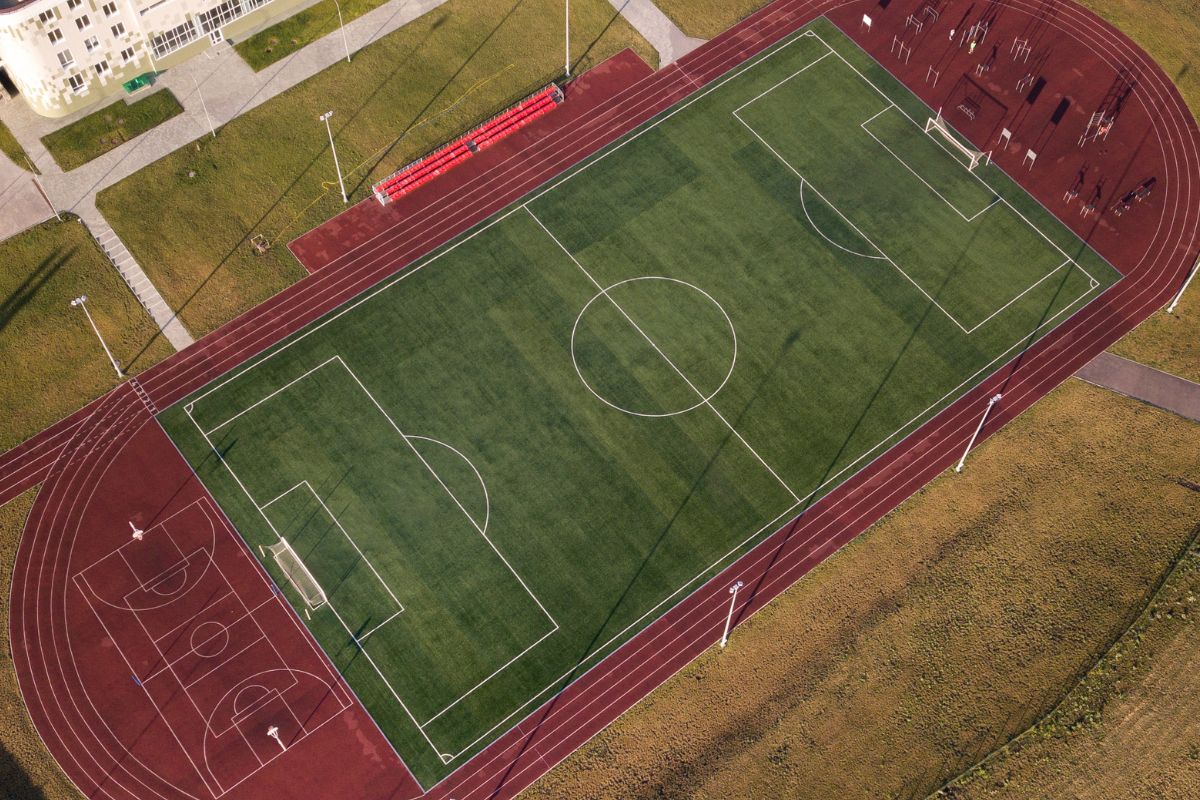If you follow soccer, you may have noticed subtle differences between the sizes and dimensions of fields and pitches at different locations.
Don’t worry, you’re not crazy for thinking they might be different sizes, it’s true!

There’s a variety of reasons why two different fields might be different sizes. Coaches might think a wider pitch would give their team an advantage, for example.
In this guide, we’ll be going over the various reasons why soccer pitches might be different sizes.
Home-Field Advantage
The primary reason that a soccer club might want their home field to be a different size is that they think it will give them some kind of strategic or tactical advantage. You may have heard of the home-field advantage in soccer and, while it sometimes applies to the support from home fans in the stands, it can also apply in this context.
Different tactical styles can actually suit certain pitch sizes better. For example, a team that prioritizes defense and aims to cut their opponent’s attacks down quickly might want a smaller pitch. Smaller pitches offer less space for attacks to develop, making it easier for the defending team to win the ball back and hold onto it.
Alternatively, a team that has two of their best players on either wing of the field might benefit from having a wider pitch to play on. In this case, the dimensions of the pitch are more important than the overall size.
Of course, these strategic advantages are completely subjective so certain coaches might think differently from one another and come up with different ideal pitch sizes for the same tactics.
For some coaches, it’s also worth thinking about the stamina of their players when deciding what dimensions to use for their home pitch. Teams with a higher average age might benefit from smaller pitches because it involves less running during a game.
Practicality
One of the other main reasons for the differing sizes of soccer pitches is practicality. Let’s forget about the top levels of professional soccer for a minute.
The standard grassroots level of soccer doesn’t have the same budget or ability to change the dimensions of their home pitch whenever they like. The groundsman will typically be a part-time or volunteer worker who doesn’t have the time or means to repaint field lines every week. Similarly, if a team’s home field is in a public park with other fields nearby, it might not be possible to widen a pitch without it breaching into another.
This rule even applies to some higher levels of soccer. For example, a team that gets promoted into a professional league may have to change its field dimensions or size to fit the regulations of its new league.
However, because there is some lenience in the rules about soccer field dimensions, every team can take part in competitive competitions, regardless of their budget.
Youth Soccer
Finally, another of the major reasons that soccer pitches tend to be different sizes is to do with the ages of the players. After all, it’s not really fair to make a team of 10-year-olds play on the same sized field as a group of adults!
Field sizes can vary greatly at the youth levels of soccer because the heights, sizes, and abilities of players will vary in each age category.
US Youth Soccer has create a set of rules for the sizes of the fields based on the age of the players::
- U6-U8: 25-35 yards x 15-25 yards
- U9- U10: 55-65 yards x 35-45 yards
- U11-U12: 70-80 yards x 45-55 yards
What Are The Rules About Soccer Field Sizes?
It might seem strange to a casual observer that soccer teams can play on fields that are completely different sizes. Of course, there are rules about the minimum and maximum sizes that soccer pitches can be.
According to FIFA’s (the governing body for international soccer) regulations, a soccer field must be 50-100 yards in width and 100-130 yards in length.
As you can tell, this leaves quite a lot of wiggle room for teams to exercise ‘creative control’ over what dimensions they use for their home grounds. However, different competitions also have different rules about pitch lengths and widths.
Many leagues have their own rules about how big the field of play has to be. For example, in the Bundesliga (the German first division) they stay within FIFA’s regulation, but the rules are much more clearly defined:
‘The pitch must be 105 meters (115 yds) long and 68 meters (74 yds) wide.’
The However, even with these pretty specific regulations, there is still an allowance for the dimensions to drop as low as 100 meters (110 yds) in length and 64 meters (70 yds) in width.
How Often Do Soccer Teams Change The Size Of Their Field?
Based on what you’ve read so far, you might think that professional soccer teams are constantly changing the sizes and dimensions of their pitch depending on what opponent they’re facing that week. However, it actually happens far less frequently than you might think.
The practical issues that come with changing the length of every line on a soccer field often don’t outweigh the tactical advantage it might give the home team.
Final Thoughts
We hope you’ve enjoyed learning about the changing sizes of soccer pitches and finding out why teams might prefer smaller or larger fields.
Of course, the phenomenon of changing pitch sizes isn’t actually as common as it might seem from this article so don’t expect to see your favorite team’s pitch changing too drastically.
After all, you won’t see any teams playing on a square pitch one week and a rectangle the next week!



0 Responses